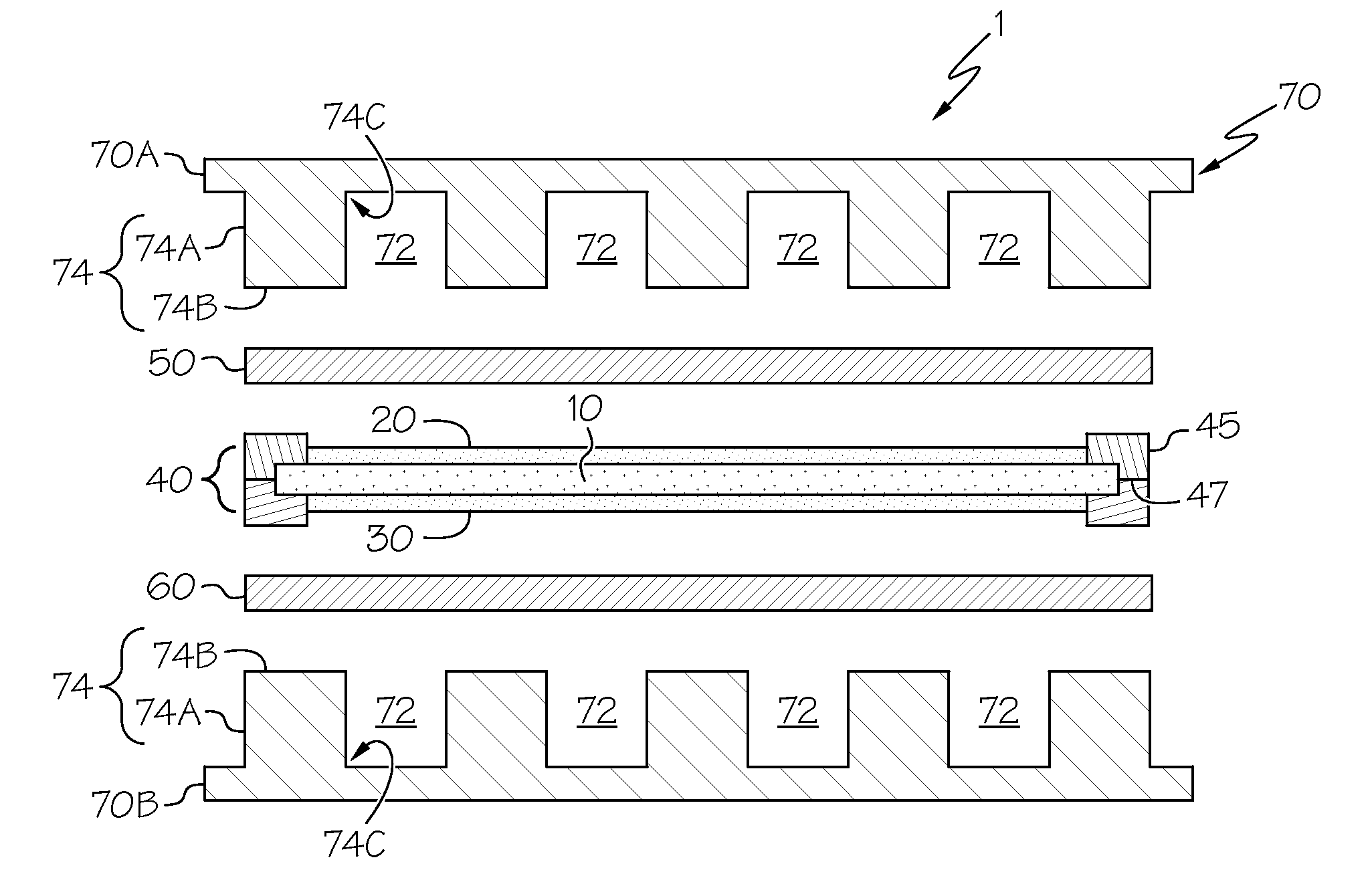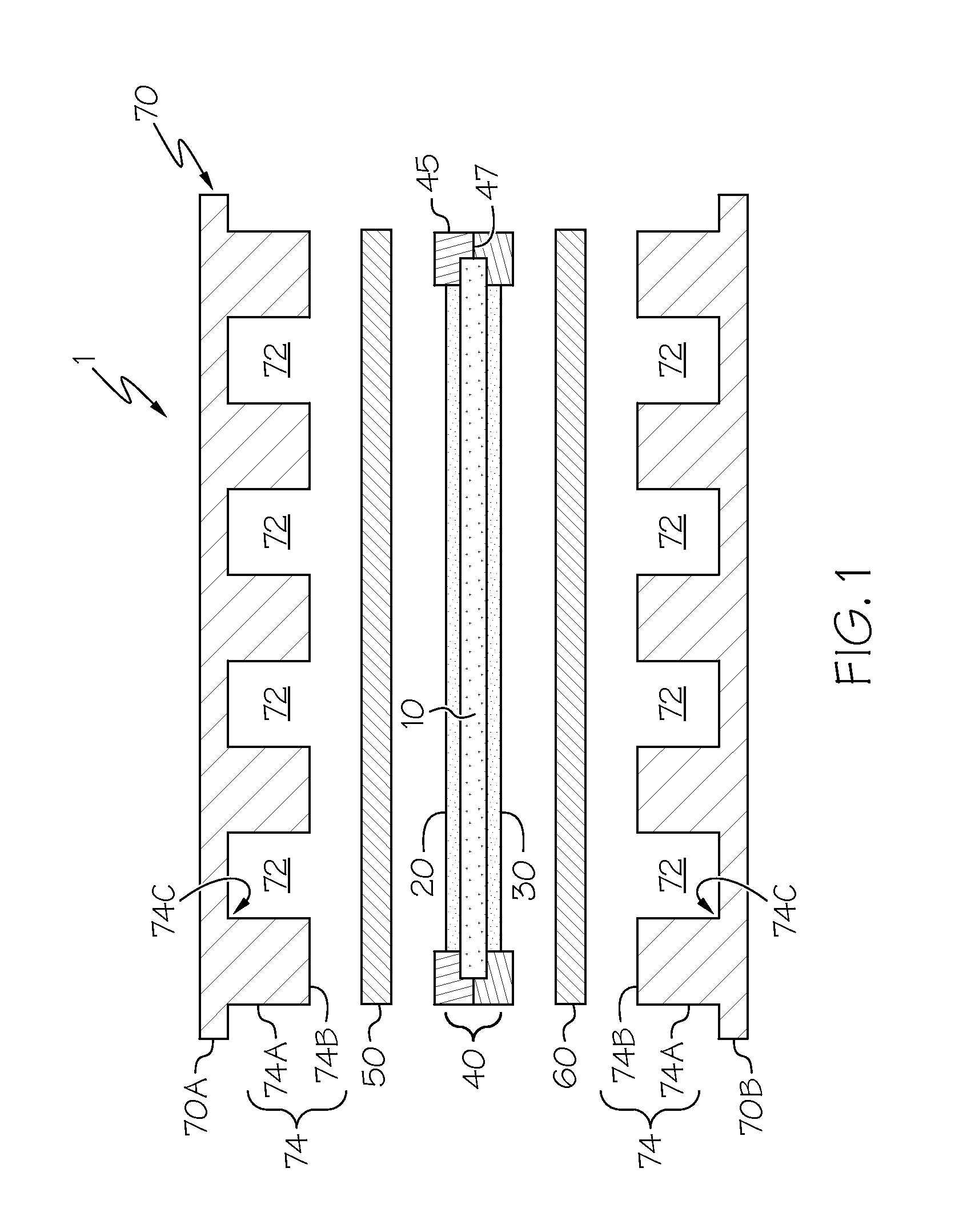Injected metal bead channel seal achieved through stamped plate features on fuel cell bipolar plates
a fuel cell bipolar plate and stamped plate technology, applied in the direction of cell components, final product manufacturing, sustainable manufacturing/processing, etc., can solve the problems of long manufacturing cycle time, high cost, and high cost of above sealing approaches to achieve high volume bipolar plate production, and achieve the effect of sealing
- Summary
- Abstract
- Description
- Claims
- Application Information
AI Technical Summary
Benefits of technology
Problems solved by technology
Method used
Image
Examples
Embodiment Construction
[0017]Referring initially to FIG. 1, a simplified view of a PEM fuel cell 1 in exploded form is shown. The fuel cell 1 includes a substantially planar proton exchange membrane 10, anode catalyst layer 20 in facing contact with one face of the proton exchange membrane 10, and cathode catalyst layer 30 in facing contact with the other face. Collectively, the proton exchange membrane 10 and catalyst layers 20 and 30 are referred to as the MEA 40. An anode diffusion layer 50 is arranged in facing contact with the anode catalyst layer 20, while a cathode diffusion layer 60 is arranged in facing contact with the cathode catalyst layer 30. Each of diffusion layers 50 and 60 are made with a generally porous construction to facilitate the passage of gaseous reactants to the catalyst layers 20 and 30. Collectively, anode catalyst layer 20 and cathode catalyst layer 30 are referred to as electrodes, and can be formed as separate distinct layers as shown, or in the alternate (as mentioned above...
PUM
 Login to View More
Login to View More Abstract
Description
Claims
Application Information
 Login to View More
Login to View More - R&D
- Intellectual Property
- Life Sciences
- Materials
- Tech Scout
- Unparalleled Data Quality
- Higher Quality Content
- 60% Fewer Hallucinations
Browse by: Latest US Patents, China's latest patents, Technical Efficacy Thesaurus, Application Domain, Technology Topic, Popular Technical Reports.
© 2025 PatSnap. All rights reserved.Legal|Privacy policy|Modern Slavery Act Transparency Statement|Sitemap|About US| Contact US: help@patsnap.com



